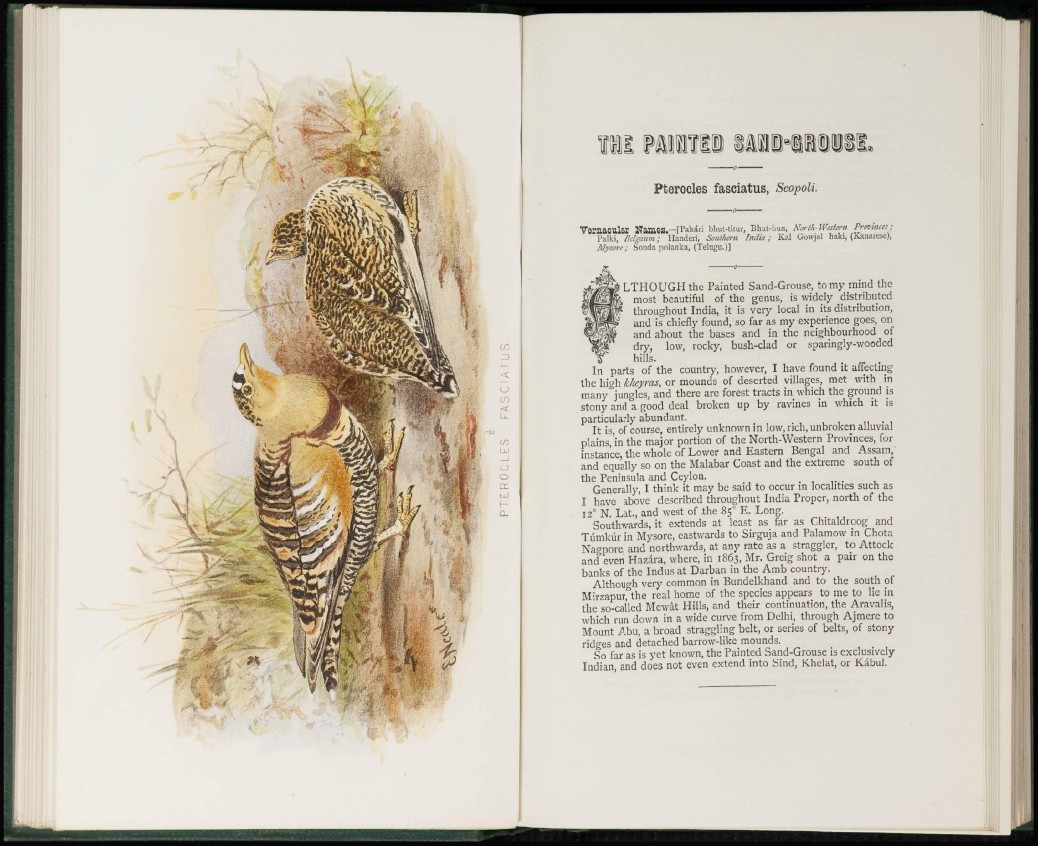
I l l M l f ti
Pterocles fasciatus, Scopoli.
Vernacular Names.—fPaMri bhut-titur, Bluit-bun, Korth-Westcm Provinces;
Palki, Belgaum; Handeri, Southern India; Kal Gowjal haki, (Kanaiese),
Mysore ; Sonda polanka, (Telugu.)]
& '
LTHOUGH the Painted Sand-Grouse, to my mind the
most beautiful of the genus, is widely distributed
throughout India, it is very local in its distribution,
and is chiefly found, so far as my experience goes, on
and about the bases and in the neighbourhood of
dry, low, rocky, bush-clad or sparingly-wooded
hills.
In parts of the country, however, I have found it affecting
the high kheyras, or mounds of deserted villages, met with in
many jungles, and there arc forest tracts in which the ground is
stony and a good deal broken up by ravines in which it is
particularly abundant.
It is, of course, entirely unknown in low, rich, unbroken alluvial
plains, in the major portion of the North-Western Provinces, for
instance, the whole of Lower and Eastern Bengal and Assam,
and equally so on the Malabar Coast and the extreme south of
the Peninsula and Ceylon.
Generally, I think it may be said to occur in localities such as
I have above described throughout India Proper, north of the
12° N. L a t , and west of the 850 E. Long.
Southwards, it extends at least as far as Chitaldroog and
Tiimkur in Mysore, eastwards to Sirguja and Palamow in Chota
Nagpore, and northwards, at any rate as a straggler, to Attock
and even Hazara, where, in 1863, Mr. Grcig shot a pair on the
banks of the Indus at Darban in the Amb country.
Although very common in Bundelkhand and to the south of
Mirzapur, the real home of the species appears to me to lie in
the so-called Mcwat Hills, and their continuation, the Aravalis,
which run down in a wide curve from Delhi, through Ajmere to
Mount Abu, a broad straggling belt, or series of belts, of stony
ridges and detached barrow-like mounds.
So far as is yet known, the Painted Sand-Grouse is exclusively
Indian, and does not even extend into Sind, Khelat, or Kabul.